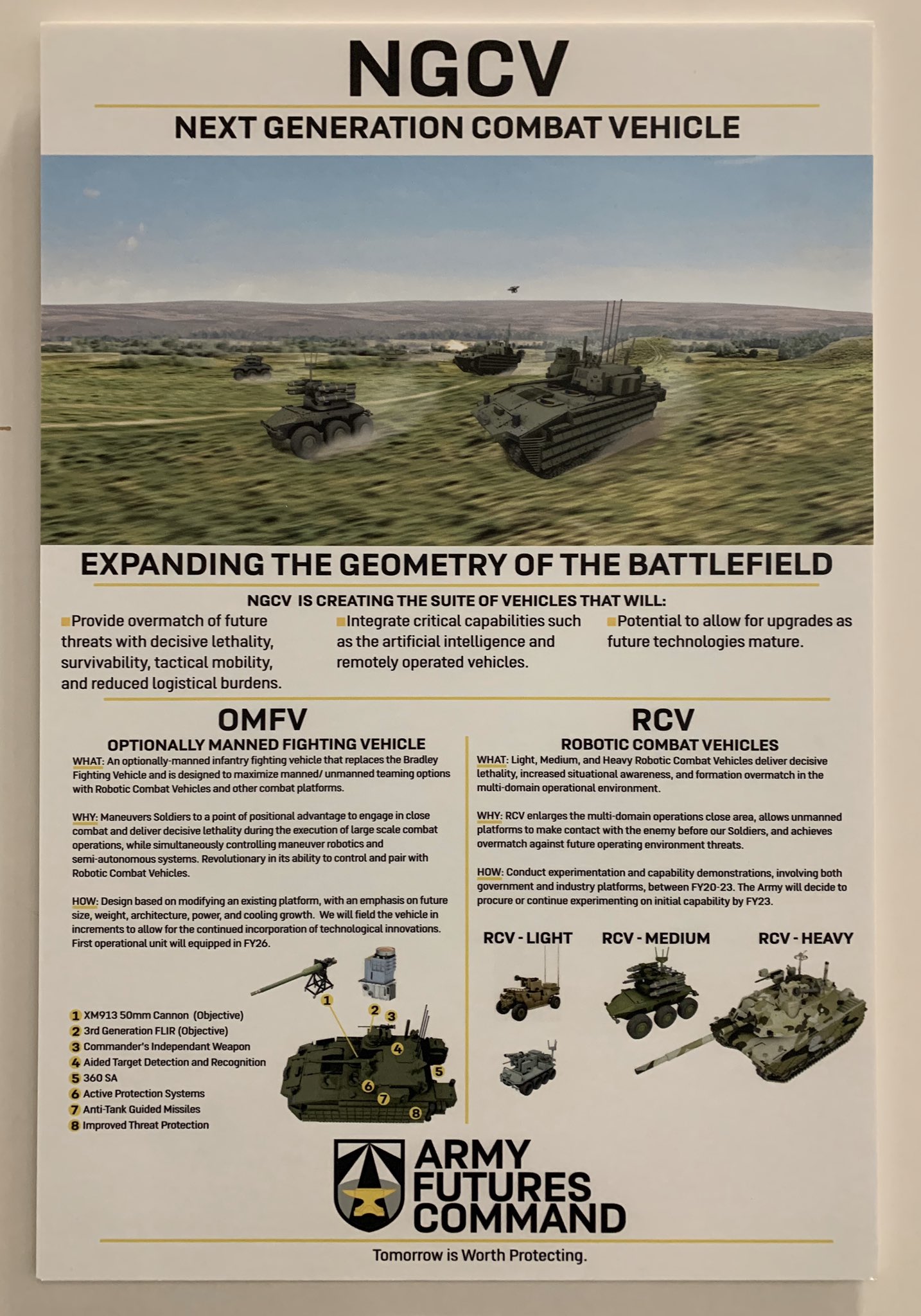U.S. Army to award contracts to QinetiQ-NA and Textron for robotic combat vehicles
Posted on
The U.S. Army has announced on Friday that QinetiQ North America and Textron will receive contacts to build Robotic Combat Vehicles.
The U.S. Army CCDC Ground Vehicle Systems Center and the U.S. Army Next Generation Combat Vehicles Cross Functional Team intends to award an Other Transaction Agreement to QinetiQ North America to build four Light and Textron to build four Medium Robotic Combat Vehicles.
The Army’s selections for both the RCV Light and RCV Medium agreements were announced in coordination with its partner, the National Advanced Mobility Consortium today. Pending successful negotiations, the Army intends to award the final OTA for both variants by mid-February.
“The progress that our engineers, scientists, project managers and leaders around Team Warren and the Army Modernization Enterprise have made in moving the RCV closer to reality is truly a heartening success story for Army modernization,” said Jeffrey Langhout, Director, Ground Vehicle Systems Center. “That we can get this far already is a testament to the dedication and passion of the Army to giving our Soldiers the best capabilities possible. This is a great day for our Army, as we make another important step in learning how we can employ robotic vehicles into our future formations.”
These RCVs will be used as part of the Army’s Robotic Campaign of Learning that seeks to determine the feasibility of integrating unmanned vehicles into ground combat operations. The Light and Medium RCVs will be used to conduct a company-level experiment at the end of 2021. The results of that experiment, a platoon-level experiment in March of 2020, and several virtual experiments will inform a decision by the Army on how to proceed with robotic combat vehicles in 2023.
“Robots have the potential to revolutionize the way we conduct ground combat operations,” said Brig. Gen. Ross Coffman, Director of the Next Generation Combat Vehicles Cross Functional Team. “Whether that’s giving increased fire power to a dismounted patrol, breaching an enemy fighting position, or providing CBRNE reconnaissance, we envision these vehicles providing commanders more time and space for decisions and reducing risk to Soldiers.”
The main goal of the RCV project – a creation of the next generation of vehicles that are not only more lethal and survivable than current combat platforms but much smaller, lighter, and more fuel efficient. Soldiers in the field need the right equipment to be successful. A tank that is too heavy to cross a bridge or maneuver through rough terrain and high altitudes can have a serious impact on mission success.
With no human operators inside it, the RCV can provide the lethality associated with armored combat vehicles in a much smaller form. Plainly speaking, without a crew, the RCV requires less armor and can dedicate space and power to support modular mission payloads or hybrid electric drive batteries.
The family of RCVs will include three variants. Army officials envision the light version to be transportable by rotary wing. The medium variant would be able to fit onto a C-130 aircraft, and the heavy variant would fit onto a C-17 aircraft.
The new combat vehicles also will have cutting-edge features such as a remote turret for the 25 mm main gun or more lethality weapon systems, 360-degree situational awareness cameras and enhanced remote stations. The new RCV will also be able to keep pace with infantry and other armored vehicles during off-road maneuver and movement on paved streets and highways.

Subscribe to our newsletter
Promotions, new products and sales. Directly to your inbox.
